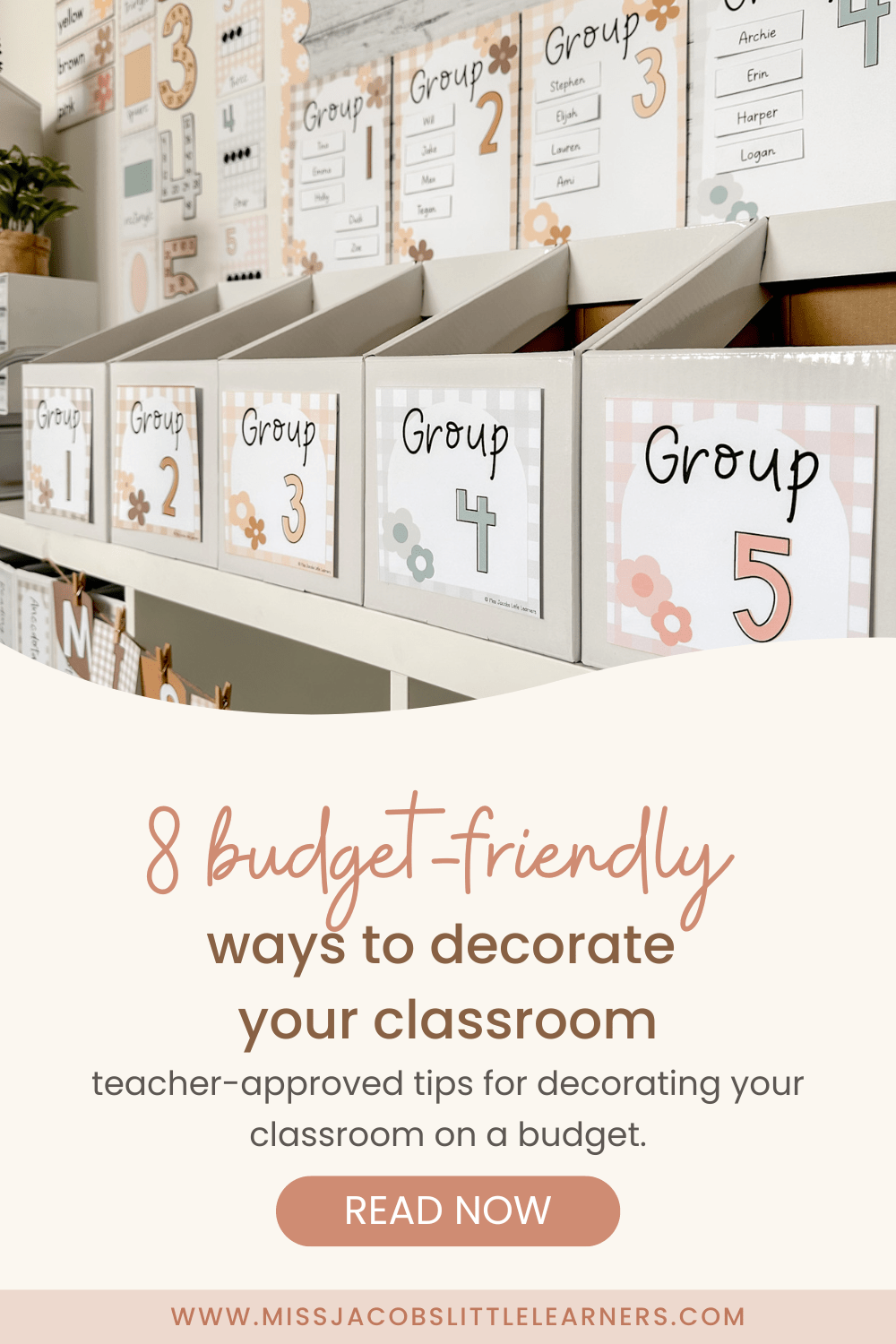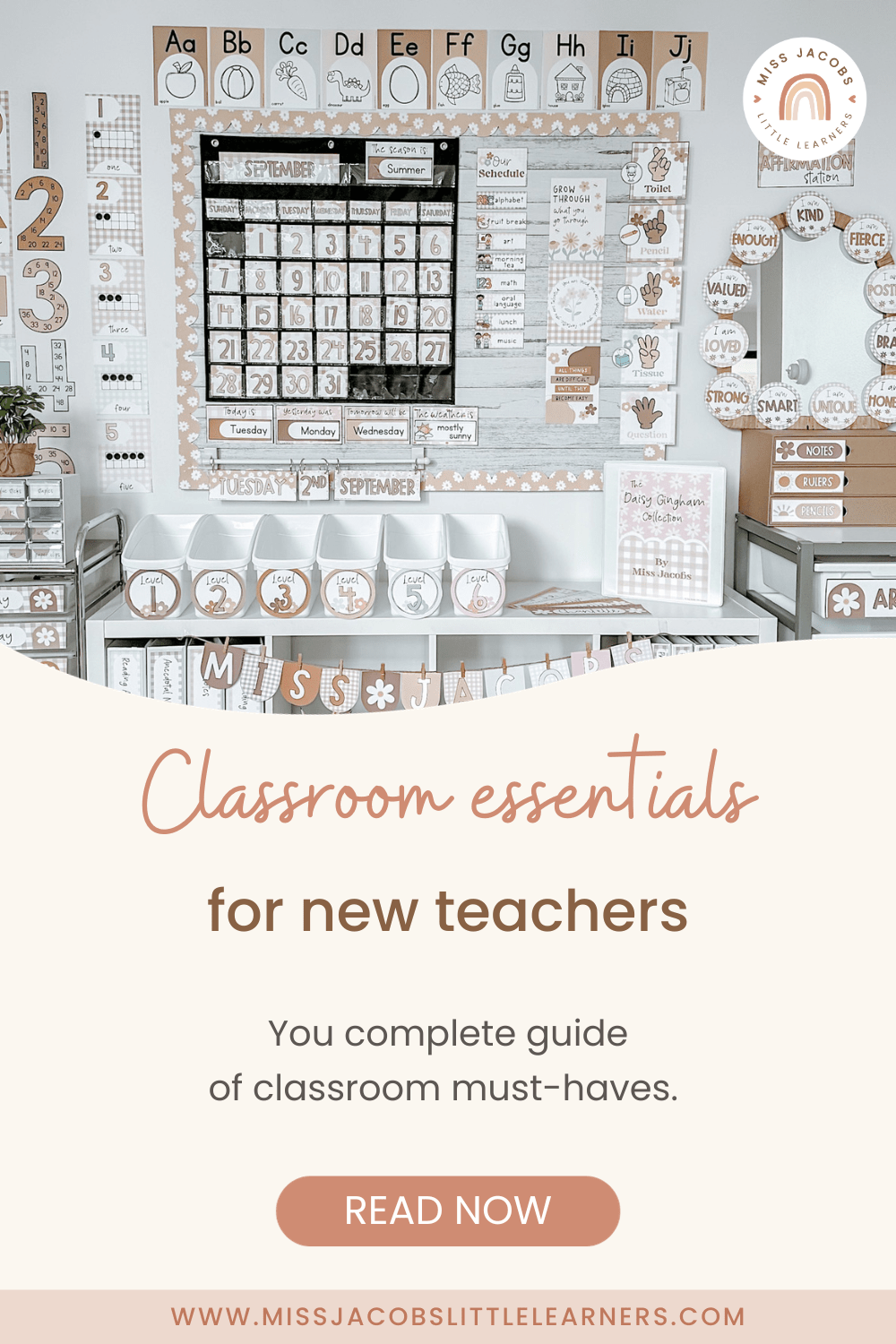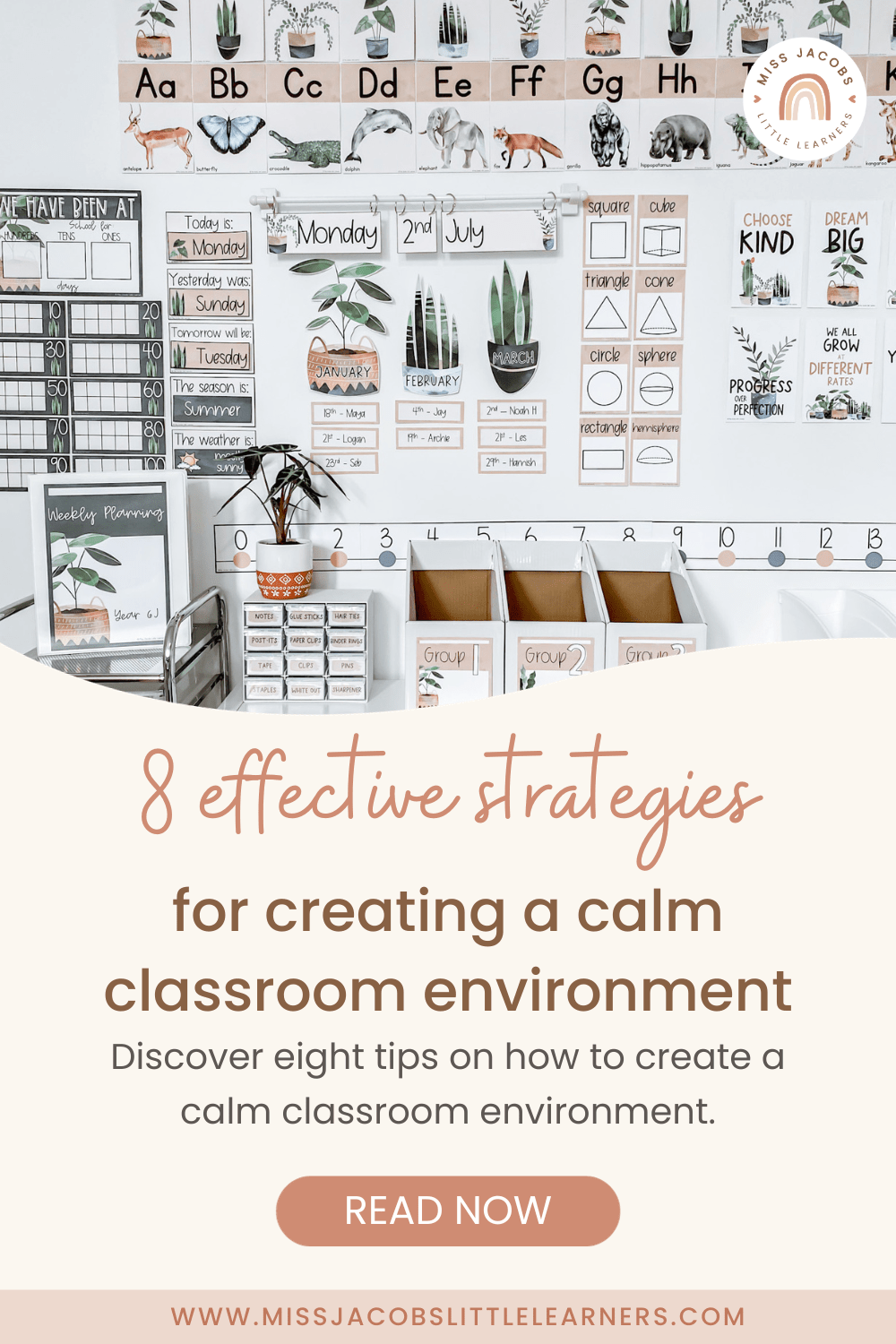
8 budget-friendly ways to decorate your classroom.
As educators, we’ve all been there, dipping into our own pockets to pick up those added extras for our classrooms. Creating a visually stimulating learning environment isn’t always easy when...
If you’ve had the joy of teaching an Autistic child, you’ll know just how critical a supportive environment can be.
But sadly, for so many Autistic kids, the right environment and support measures aren’t in place. And the impact of this is profound - as we know, a child’s experience at school can shape their self-identity in real and lasting ways.
So BFFs, today I’m sharing five ways to support Autistic kids in your classroom. I’m sharing some of the resources, experts and questions you can draw upon to build a neurodivergent affirmative classroom.
Who are the greatest experts when it comes to Autism? Autistic people!
Listening to the lived experience of Autistic people is paramount. The Autistic voice needs to inform any work to implement accommodations or supportive practices.
So, to kick us off, I reached out to Cherie Clonan - a proud AUDHD’er (that’s Autism + ADHD) and Mum to an amazing Autistic son.
She explained, “The biggest thing is that every Autistic experience is different. And therefore, learning experiences will be affected differently. Every single day an Autistic child goes to school they are heading into an environment not really set up to include their neurotype, no matter how inclusive the school is.”
“The environment alone isn't designed for neurodistinct individuals, like the sensory overwhelm of a classroom or playground. The changing rules and expectations. The social communication challenges. Autistic children are impacted from a mental health and wellbeing perspective, and many have to ‘mask’ in order to survive.”
There are so many wonderful Autistic folk online who are proud and keen to be advocates in this space. Never underestimate the value of a simple convo when it comes to understanding others’ lived experiences. Reach out to your Autistic mates and ask their thoughts on school, you’ll learn so much.
The importance of a personalised approach and understanding was backed up for me, as I chatted to Support Education Consultant, Jenni Heffernan.
She said, “The biggest trap for teachers is to generalise their understanding of Autism, instead of understanding the individual. You can’t just plonk Autistic kids into an artificial classroom and expect them to be motivated. The more you know the individual the more you can support them.”
In addition to the expertise of everyday Autistic people, there are some fantastic professionals who work in this space.
And when it comes to building safe and supportive classrooms, engaging professional support is so important.
One Autistic person who does incredible work in this field is Sonny Jane Wise, aka livedexperienceeducator. BFFs, I can’t recommend their work enough - take some time to check out, support and engage their offerings. It’ll be a game-changer for you, no doubt about it!
Another powerhouse is Sandhya Menon. She’s a Neurodivergent Paediatric Psychologist, and much like Sonny, she has online resources, workshops and services that are just groundbreakingly good.
If you’re looking for fantastic professionals in your local area, my hot tip is this: pay close attention to the language they use.
Do they talk about Autistic traits or challenges as deficits? Do they use problematic and outdated terms like ‘Aspergers’ or ‘high-functioning?’ These are red flags, my friends!
Neurodivergent affirmative practitioners will be deeply conscious of the language they use and will advocate for others to do the same.
Thankfully, the awareness that Autistic kids have specialised sensory needs is growing each year.
And every day I see your gorgeous classrooms fill my feed with breakout spaces, sensory play stations and sensory tools like the ones Sonny describes below.
 Sonny Jane Wise, @livedexperienceeducator
Sonny Jane Wise, @livedexperienceeducatorBut there’s more we can do!
After thirty years in Support Education, Consultant Jenni Heffernan shared some simple accommodations that made the world of difference for her students. She said:
From my own resources, I’ve found that the Home Routine and Daily Schedule Cards, and the Visual Timetable Displays can be really useful for Autistic students.
Similarly, the Voice Level Displays and Hand Signals can help with the management of noise, which is so important for an Austistic-friendly classroom.
For many Autistic kids, routine, predictability and clarity are essential for their happiness, security and success in the classroom. These visual displays can play a small but mighty part in that!
In addition to sensory needs, there’s a range of experiences that Autistic people can face, and knowing how to support these experiences will make a major impact.
I’ve popped together a little list of these differences, linking to some amazing content from people with lived experience or specialised expertise.
So, here are some common Autistic differences and traits to learn about, via the amazing @onwardsandupwardspsych and @livedexperienceeducator:
Now, of course, it bears repeating that none of these experiences or strategies will fit all Autistic kids. And there are so many more differences to learn about.
Like… *checks notes*... absolutely-every-human-ever, we all take time to learn who we are, how we thrive and what we need.
When I think back (with horror!) at how little time my uni degree devoted to neurodiversity, it really drives home the need for self-led education. There’s so much we can learn from each other too.
I reached out via IG stories recently to ask you guys about your approaches, and your responses were fantastic. I’ll share one below.

Every human is completely unique - irrespective of where they lie with neurodiversity.
But as I chatted to parents, teachers and Autistic folk, there were some descriptive words that just came up again and again - passionate, loyal, empathetic, detailed, and funny.
There is so much to celebrate when it comes to neurodistinct kids - whether it’s their creativity, enthusiasm, analytic thinking, tangential thinking - the list is endless.
Cherie put it best when she said “Autistic children have intense special interests, which can positively impact not only their own learning experiences ... but that of their peers as well. If you've ever wanted a classmate to go on an incredible adventure to deeply unpack the educational curriculum? Buddy them up with an Autistic child who has an intense special interest within that area.”
I have to say, throughout writing this blog post, there was one thing that kept coming to mind - and that was elephants. (Bear with me on this one BFFs!)
I kept coming back to the thought that you can tether a circus elephant - capable of clearing trees in the wild - to a thin pole if they’re conditioned the right way. They can go their whole lives not knowing the power they have.
And I see our classrooms as having that same kind of potential.
The wrong environment tethers kids to the belief that there’s something ‘wrong’ with them or that they’re inherently flawed. But with the right support and neurodiversity affirming practices, we rip those thin poles out. We help kids unleash their true potential.
After all, helping students see their strengths clearly and their differences without judgement is my favourite teaching superpower.



Teacher and Founder of Miss Jacobs Little Learners. If you’re dedicated to making a positive difference in the lives of your students – I’m here to help you.
Read MoreMiss Jacobs’ Little Teacher Community is a dedicated space for teachers just like you!
JOIN HERESign up as a Miss Jacobs BFF member today and get access to free resources!
sign up
As educators, we’ve all been there, dipping into our own pockets to pick up those added extras for our classrooms. Creating a visually stimulating learning environment isn’t always easy when...

Following the overwhelmingly positive response to the 'Cute Labels' collection (seriously you guys 🤩), your enthusiasm for a sea life theme couldn't be ignored. So, after some brainstorming and a...

Ahhh, to be a grad teacher again. There’s no feeling quite like walking into your very own classroom for the first time. The excitement, the nerves, the niggling sense of...

Have you ever walked into a classroom only to find your students fidgeting, interrupting, daydreaming, staring out the window, making paper planes, forgetting their inside voices and the stories that...